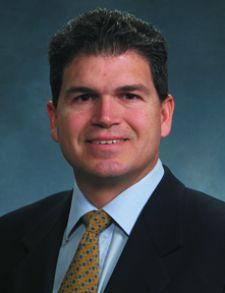
As imaging modalities, such as computed tomography and magnetic resonance imaging, gain heft and horsepower that produce more images faster and in greater detail, they are driving picture archiving and communication systems (PACS) feverishly to keep pace.
But PACS vendors are navigating around additional process speed bumps when outpatient care facilities seek seamless integration, whether their system is a single package or a patchwork quilt of applications and functionality, with electronic health record (EHR) and electronic medical record (EMR) capabilities. In fact, a small but growing number of facilities are pushing to incorporate their oncology and radiation therapy systems into the larger picture.
As a result, in this second installment of a multipart series, Outpatient Care Technology revisited with nearly two dozen key executives at the leading PACS manufacturers for their insights on product development, key market and technology trends and customer demand.
Without giving away any company or trade secrets, conceptually how will the next-generation PACS accommodate the larger volume data sets courtesy of 3D real-time images and the need to image more to prevent non-reimbursable procedures due to medical errors?
Bill Culton, product manager, diagnostic solutions, ASPYRA Inc., Calabasas, CA
The medical industry is not the only one faced with larger and larger data sets. Manufacturers of storage devices and data communication systems are being driven to handle and store large objects and fast data transfers to meet this demand. New technologies, such as holistic storage, are on the new horizon.
Hossein Pourmand, vice president, business development, Candelis, Irvine, CA
Up to now, most if not all PACS vendors have been devoting their R&D efforts and products toward the visualization side of PACS. The archiving and image management part of PACS are now becoming very critical as larger data sets, such as those associated with 64-slice, 128-slice and 320-slice CT, IVUS and PET/CT-64, become more prevalent. One proven way for accommodating the larger volumes of data has been a PACS Appliance, which consists of a suite of sophisticated software capabilities closely integrated with state-of-the-art hardware.
Capitalizing on its 20-year history as a provider of innovative data storage solutions, Candelis Inc. is now widely recognized as the pioneer in this area and its ImageGrid PACS Appliance is now recognized as a disruptive technology. A ‘disruptive technology’ is defined as an innovation, product or service that overturns existing dominant technologies. By utilizing an appliance operating system, optimized internal data path, embedded database and DICOM services fully integrated with industry-standard CPU and RAID 5 or RAID 6 archive, ImageGrid offers the most cost effective yet robust and feature-rich PACS ‘back-end’ in today’s competitive market.
Michael W. Jackman, president, Healthcare Information Solutions, Carestream Health Inc., Rochester, NY
The radiologist shortage is expected to continue for some time, so we cannot afford to have delays in diagnosis and reporting caused by lengthy processing of large imaging studies. Next-generation PACS must use advanced computing power and faster memory to provide efficient processing of imaging information. At the same time, PACS needs to employ advanced medical software applications that provide volume-matching for prior exams, automatic registration and rendering of images, automatic and intelligent segmentation, measurement tools, body part recognition and new forms of CAD.
We believe our company will be able to achieve both the hardware and software advances needed to manage these data sets in a way that presents clinically relevant information quickly and maximizes the productivity of radiologists and other clinicians. We already have the ability to integrate tools such as volume rendering, auto segmentation and cardiac analysis into PACS so that clinicians can view all the information at a PACS workstation.
Troy Oliphant, PACS strategic analyst, Cerner Corp., Kansas City, MO
The ability to view, store and [integrate] 2D diagnosis with 3D imaging in a naturalized workflow is a necessity in today’s marketplace. With today’s volume scanners, a PACS must be able to cope with thousands of images in an innovative fashion, while at the same time finding ways to enhance the workflow and increase productivity.
The old way of the technologist doing reconstructions and sending those data sets into the PACS for the radiologist to review is quickly becoming unmanageable. The radiologist needs the ability in any viewport to dynamically interact with a data set in any plane or obliquity necessary to make a diagnosis. Cerner ProVision PACS gives the radiologist this freedom. The ability to view the volume data in any plane or obliquity. To readjust the slice thickness and spacing to speed up the reading of large stacks of images. The freedom to use the volume of data in the most efficient way to make a diagnosis.
Ed Heere, president & CEO, CoActiv Medical Division, CoActiv LLC, Ridgefield, CT
Some current-generation PACS products are already dealing with just this issue. As data sets become larger and larger the issues of speed of acquisition and distribution, as well as the cost and size of required redundant archiving, has already lead to innovative, new, fast and secure IT transport protocols as well as online remote affordable redundant archiving. CoActiv has managed to hold, and even reduce the cost, of their QUAD-REDUNDANT EXAM-VAULT Archiving as the average study size has increased substantially over the past several years. We accomplished this by developing a unique flexible and scalable system that uses online redundant arrays of inexpensive hard drives in redundant Tier-IV datacenters that allow us to provide the most redundant and reliable archiving possible – a 100 percent up-time SLA.
We developed this system by applying ‘Moore’s Law’ to archiving. As the size of studies increase, our cost to archive decreases because the cost of the hardware and the bandwidth needed to support our EXAM-VAULT has been decreasing at a rate greater the rate of growth of the study size. By applying our incredible economy of scale, we can offer significantly more redundant, secure and accessible archiving than a facility can provide themselves and at a lower price.
Milton Silva-Craig, J.D., MBA, president & CEO, Technology Solutions Co. and its wholly owned Exogen Solutions LLC, subsidiary, Chicago (Silva is former president and Chief Operating Officer, Emageon)
The fundamental technology occurrence within digital image management today is the concept of ‘virtualization.’ For instance, there are technologies in the market that allow the virtualization of disparate PACS to appear as one, unified worklist. This is very prevalent in the area of outsourced diagnostic reading. For instance, if you are a radiologist reading for five separate hospitals, which have five different PACS, you do not want to have to log-in five separate times. Your preference is to sit a workstation, access a unified worklist, which aggregates the five PACS and conduct your work seamlessly.
Staying with this concept of virtualization, this capability has extended to 3D. There is what is called server-side rendering in 3D. Essentially, there are powerful servers in the ‘virtual digital image system cloud’ that allow for the 3D post-processing of even larger data sets. It is no longer required to have 3D rendering at the desktop. That can be a back-office process, which once complete, is forwarded to your desktop.
Paul Shumway, vice president, NovaRad Corp., Salt Lake City
Larger volume data sets from 3D real-time imaging are not posing a big problem for most PACS because computer and storage technologies have progressed as rapidly as imaging capabilities. If PACS software is written on a platform that has the capability to take advantage of network, memory, storage enhancements and server speeds, PACS can easily accommodate the largest volumes of data sets.
Eric Mahler, director of marketing, Radiology Informatics, Philips Healthcare, Andover, MA
The newest versions of Philips iSite PACS feature advanced visualization capabilities that are completely integrated into the PACS workflow and provide additional diagnostic information through clinically relevant visualization anywhere throughout the enterprise. Fully interactive real-time volumetric reading tools – MIP, MPR, 3D – are delivered to all enterprise-wide iSite PACS workstations via Philips iSyntax technology, which brings advanced rendering performance and scalability without additional cost and complexities.
Lenny Reznik, director, image and information solutions, Agfa HealthCare Americas, Greenville, SC
Agfa HealthCare is developing more tools that help radiologists handle large volume data sets, consistent with our work with the SIIM TRIP initiative.
The advent of multislice modalities creates unique workflow challenges for the radiologists as well as clinicians who need access to images. Outpatient care facilities in particular, should look for a vendor that can minimize the workflow challenges created by multislice modalities. PACS is required for reading and interpreting large volume data sets and more and more, imaging is seen as a noninvasive diagnostic procedure that ultimately leads to earlier diagnosis and detection of many diseases. The reality today is that data sets are increasing exponentially and computer networks are not. However, new technology from the IT industry is making inroads into PACS.
Server-side rendering relies on the power inside today’s modern servers to render large volume data sets into 3D that then just transmit pixel data to the desktop. With the server capable of rendering any kind of advanced 3D image, expensive networks, transmission costs, high-end graphic cards and PCs are not required. A relatively simple PC does not need to contain specific embedded hardware in order to display high-quality images.
Allen Scales, senior vice president, product management, Emageon, Birmingham, AL
From an acquisition and content management perspective, there will be increased utilization of the enhanced MR and CT DICOM protocols, which provide more efficient transport of data by reducing the amount of meta-data processed for each image. Solutions designed to provide multi-threading, multiple processors and clustered architectures will be necessary to provide optimal performance for sites with significant volumes of large studies.
From a visualization and distribution perspective, multiple strategies will be employed to meet the complex workflows in healthcare. These include increased utilization of progressive streaming of data for client side rendering, server-side rendering where the rendering engine is collocated with source data and more intelligent pre-processing workflows for CAD.
David Nikolai, business marketing manager, IMPAC Medical Systems Inc., Escondido, CA
The key to accommodating and managing the ever increasing volume of images and data sets, especially in Image-Guided Radiotherapy (IGRT), is having a EMR-integrated PACS that is fully scalable and hardware independent. Scalability is obviously important as the storage requirements for 3D and 4D images steadily increase, but equally important is the ability to add on storage media and solutions that may not even exist today. Information archiving and storage technology is constantly changing with new types of media, different formats, faster speeds and innovative designs and architectures from may different manufacturers. It’s vital that your PACS be flexible enough to allow operation independent of the type or manufacture of the actual storage technology. IMPAC has achieved this flexibility with our MOSAIQ Oncology PACS.
Bob Cooke, vice president, Network Business Management, FUJIFILM Medical Systems USA, Inc., Stamford, CT
There is no question that the acquisition of volumetric and functional data from new modalities clearly presents a challenge to today’s systems. A few factors need to be considered. New kinds of user interfaces and navigation models will be required. Integration with the diagnostic process will be required, including dealing with comparisons. New kinds of computer architectures – both software and hardware – will be required. While today’s concept of integrating advanced visualization will continue, as the requirement for visualizing complex data becomes more routine we will increasingly see these capabilities integrated into the diagnostic process.
The need to control utilization is another story altogether. Improving the accuracy of diagnosis through better ergonomics and integration of information is one aspect of the solution. Another aspect to the solution is to extend PACS beyond its traditional definition to incorporate results management and generation, which will ultimately lead to better decisions support by linking the order to the result.
Richard Taylor, national sales director, ScImage, Los Altos, CA
If the physician’s diagnosis is based on reconstructed data, the healthcare industry must ultimately answer the question of how much of the original raw data must be maintained. As a PACS vendor, ScImage must be prepared to store the information as specified by the client institution, as well as provide appropriate tools or integrate third-party tools for its analysis.
Henri “Rik” Primo, director of marketing and strategic relationships, Image and Knowledge Management division, Siemens Healthcare, Malvern, PA
In order to increase the storage efficiency when handling larger data sets, such as multislice CT and multi-sequence MR, the DICOM committee has already defined advanced DICOM standards for archiving and transmission of the large data sets. The enhanced CT and MR DICOM objects are intended to replace the 10-year old standards applied to those modalities. They will better handle the features of current technology and the enhancements could improve interoperability between multi-vendor equipment compared with the standard DICOM attributes. Manufacturers are currently implementing these new standards in the imaging modalities and in PACS. There are also new developments in the standards for 3D ultrasound images. Further, storage technology is seeing a tremendous increase in capacity while the cost continues to come down, making large volume storage much more accommodating.
Tim Kulbago, senior vice president, strategic business initiatives, Merge Healthcare, Milwaukee
I think there are some obvious next steps that the industry will use to address these issues including development of a 64-bit server, server-side rendering, more sophisticated image management techniques and the like. It is certainly an area of concern, because at this point I believe that image acquisition technologies are outpacing the improvements in computing platforms – storage, memory and network.
Gary Reed, president, Integration Resources Inc., Lebanon, NJ
The size of 3D imaging data sets continue to grow with the advent of multi-detector CT and multi-sequence MR studies. Study data set sizes are now reaching the Terabyte range. The availability of real-time access to these huge data sets is a function of the 3D rendering algorithm, image streaming schemes, archive architecture and network bandwidth.
Today the preferred 3D solutions are client server-based with Web and wide-area access. The day of the stand-alone/hardware specific 3D workstations is passing. Clinicians want to access 3D studies from any imaging workstation at any location. There are only a few solutions that meet this requirement. In addition, vendors that offer client server 3D solutions may only offer a few basic rendering applications in the client server environment. The bulk of the clinical specific solutions are in a hardware/workstation based offering.
To assist access speed and a wide range of clinical applications, there are very few vendor solutions that utilize a centralized server for 3D reconstruction that is connected to the image archive. These solutions enable rapid 3D access from any location on any imaging workstation. In the future, five to 10 years, PACS vendors will offer these robust 3D solutions as an application module of the PACS. The PACS vendors are working on these applications but they are far behind the independent 3D application vendors and will probably acquire these vendors and integrate their applications into their PACS.
As far as non-reimbursable procedures due to medical errors goes, very few health systems are performing these procedures that do not fall under the prescribed DRG for the admitting code. There is a trend for the ER-admitting physician to over-prescribe diagnostic imaging procedures to address litigation needs; however, this is being monitored and managed to contain costs. 3D studies are being billed separately using image post-processing codes by radiologists and clinical physicians.
Rick Rubin, M. Eng., MBA, executive vice president, research and development, Intelerad Medical Systems Inc., Montreal, Quebec, Canada
As technology evolves, so will PACS. The rate of technology advancement has been governed more or less by Moore’s Law over the past few decades. This is how and why modalities can generate more volume data and how our networks can now handle 3D real-time images. This is progress that is not so much governed by our pocketbooks as it is by our desire to create bigger and better tools and our expectation that this will ultimately translate into improved patient care and outcomes.
To handle these newer and larger data volume sets, it is obvious that PACS needs to continue improving its performance and capabilities in regard to the speed of image access for users, to gain new functionality to handle real-time data and new image manipulation tools and to improve archive and data management efficiencies. However, what is less obvious to most is that the more progressive PACS vendors will also need to revisit existing capabilities and reassess whether the current functionality needs to be updated in order to improve the user experience and prevent the patchwork software effect that can arise with continually adding new features that were not part of the initial planning. Indeed, user-software interaction is an emerging specialty that will help define and differentiate what makes a good product from what makes a great product.
Shelly Fisher, president, BRIT Systems Inc., Dallas
At BRIT, one of the things we have done is redevelop our DICOM server to more efficiently store large numbers of images, while maintaining all the checks and balances required for data integrity. We have database technologies that assist this process by multi-threading across multiple processors and network technologies that allow to utilize multiple network connections. Think of it as true multitasking within the database and throughout multiple network connections. Radiologists will need to start presenting the 3D views of the data to best assist the referring physicians. The tools are already there to do this, so it is a matter of training and implementing change.
We believe these tools will make the radiologists more valuable to the referring community, but the radiologists need to work closely with their doctors to understand what is most useful to them. What angles, internal and/or external views are most desired by surgeons, oncologists, cardiologists, for the different types of studies. By understanding those needs and providing precisely the information that specialist desires, radiology can provide more of a value-add and ensure their pictures are worth a thousand words.
We will continue to store all the data until the medical community documents a standard of care. Our technology is up to the task of storing everything or just a subset. And the price of storage continues to drop.
Mike Dolan, vice president, sales, Acuo Technologies LLC, St. Paul, MN
Acuo believes that the solution to this question lies in building an infrastructure that has scalability provided by robust archiving and routing applications that can benefit from additional hardware, processors, faster networks and better storage. This can only be done cost-effectively long term by building on a standards- based platform. There are times, with bleeding-edge technology, where standards do not meet the needs of the emerging solution. When new technology reaches a critical mass, standards are generally created to support them. The providers must be adept enough to know when to break away from the proprietary systems and move to standards-based solutions. Medical imaging has been in the standards based domain for years, yet few healthcare IT directors have demanded vendor compliance. The recent 12 months have produced a watershed of opportunities to leverage the benefits of standards. Considering the enormity of the new studies and the time and cost to migrate them out, it is time to stop the deposit of standards-based data in proprietary archives.
Stephen N. Kahane, M.D., chairman, CEO and president, AMICAS Inc., Boston
Utilization of imaging has been increasing steadily for a number of years now, and we do not see any fundamental changes in this trend in the near term. As a valuable noninvasive alternative to other medical procedures, imaging continues to bring substantial value to the healthcare landscape.
As you consider the future of imaging, the notion of 2D vs. 3D imaging will become increasingly blurred. It is difficult to imagine a 320-slice CT scan creating 6,000 images being read the same way that a 4-slice CT scan creating 200 images. The reading paradigm will change and the concept of solely reading studies in 2D will likely become a thing of the past. The volumetric data sets will need to combine 2D and 3D views in a seamless workflow at the same time in order to meet the future needs of radiologists.
What about the next iteration of PACS will improve workflow by connecting with other systems, such as EHR/EMR, OIMS, HIS, financial and purchasing modules of ERP systems?
CULTON: Standards organizations and groups, such as the IHE, which are comprised of both manufacturers and users, are constantly improving the ability for different systems to share data efficiently and in a manner which fits into the users needs.
POURMAND: The next-generation PACS is moving rapidly into the realm of overall workflow improvement and management. As such, PACS can no longer operate in isolation within radiology and needs to provide interoperability and interface with various workflow solutions such as RIS/HIS/EMR as well as hospital purchasing modules, billing systems, revenue management tools and financial reporting systems. As such, PACS is becoming the set of solutions and systems which are allowing the healthcare enterprise to embrace the digitization of data and electronic records and transactions.
JACKMAN: We anticipate the emergence of a centralized enterprise PACS platform that can work with existing departmental PACS platforms – radiology, cardiology, pathology and others – to allow every user across the enterprise to review, process, diagnose and report any study from a single virtual desktop, using a single worklist to provide an integrated and efficient workflow. This overarching PACS is the key foundation to image-enabling electronic medical records. It will collect and manage all the imaging applications and then link with an EHR/EMR, which then collects and manages patient data and also interfaces with ERP systems.
OLIPHANT: Now that PACS has moved out of the radiology domain and become a more centralized repository of imaging needs, it is a necessity that the next generation of PACS has a natural integration with the rest of the hospital workflow. Thanks to Cerner Millennium, Cerner ProVision PACS has a seamless integration with the rest of the clients’ systems and to the hospitals’ HIS/RIS and EHR/EMR. This enables the radiologist to have the entire history of the patient in context with the images.
HEERE: Just as some of the lab businesses have already done, PACS will be required to automatically, securely and electronically deposit either key image or complete imaging studies directly into the referring physicians’ EMR system. Physicians just plain lack the financial and personnel resources, or the time to ‘log on, search, select and download the images associated with a prescribed procedure. They will demand and they will get this automated functionality or they will buy into a system that will provide it if their current system cannot, or will not, provide it.
SILVA-CRAIG: Again, the current technology push with PACS is in the realm of greater virtualization capabilities. The enterprise phenomenon of PACS is already established. The technology is now evolving to meet the requirements of an ever-changing business model. With respect to integration into non-PACS, like EMR/HIS/Financials, that integration has already occurred. What is more relevant, however, is that these systems, due to the tight integration or coupling’ can provide what appears to look like an integrated desktop. So virtualization can be analyzed from to vantage points – integration of disparate system to foster single point of access; but also virtual integration with respect to commonality of desktop.
SHUMWAY: To improve workflow, it is crucial for the next iteration of PACS to provide flexible interfaces that comply with industry standards, to facilitate quick and seamless connections to different systems. Today, some companies are not developing systems to comply with industry standards, instead favoring proprietary interfaces. The result for end users is they often find themselves in the situation of either incurring additional expense to pay vendors to develop an interface to cobble systems together, or they find themselves in a situation where they are working in many disparate system silos’ and losing the workflow benefits of an interconnected enterprise system. More adherence to industry standards and a focus on providing flexible interfaces will improve workflow by streamlining the process of connecting to an organization’s disparate systems.
MAHLER: iSite PACS open Application Programming Interface (API) platform currently enables integration with enterprise systems, such as EHR/EMR, OIMS, HIS, RIS and reporting solutions as well as third party and custom applications. In addition, Philips is committed to developing innovative clinical applications and tools for iSite that enrich clinical excellence across the care cycle.
REZNIK: The future is not about a PACS workstation, but an enterprise workstation, since the information delivered and the consumer base are across the entire healthcare enterprise. The enterprise workstation must be able to marry image and text information in a manner that is efficient, effective and broad reaching. Because of the explosion of information available to healthcare providers, the workstation must be designed to allow the user to focus on information specific to their roles.
Agfa HealthCare has been providing image-enabled EMR solutions for more than 10 years, starting with a simple viewer. Today, Agfa is making critical information available at the radiologist’s desktop. It is not enough to simply have image and order information – a radiologist frequently needs information from one or more other hospital information systems in order to have all the information needed to make an informed diagnosis.
By talking and listening to radiologists, we have learned that they need pharmacy data, such as medications and allergies; results, such as urinalysis for infection and liver function; lab data, such as creatinine, white blood cell count, pregnancy test; as well as surgical and cytology pathology reports. The challenge has been to retrieve that data from multiple clinical systems in real time without separate logons and to incorporate that data into the protocoling and interpretation workflow.
Our new IMPAX Clinical Module focuses on improved delivery of patient care by bringing required clinical information from multiple sources into a single desktop location. Having this information available in real time, from multiple systems with a single log-on, saves time and has the potential to improve diagnostic confidence. IMPAX Clinical Module is a software component for the IMPAX Radiology Information System/Picture Archiving and Communications System (RIS/PACS) solution that brings disparate clinical data such as lab results, pharmacy and pathology to the IMPAX radiology desktop. The IMPAX Clinical Module answers this challenge and advances the practice of radiology to new levels.
SCALES: We believe there will be increased utilization of service-oriented architectures (SOA), IHE Web access to DICOM objects (WADO) and IHE cross enterprise document sharing (XDS) to provide more efficient integration across systems.
NIKOLAI: Our philosophy is that a PACS must allow one the flexibility to archive, retrieve and manage images and data sets from within the context of a specific workflow. IMPAC achieves this for the dynamic oncology workflow by having our
MOSAIQ Oncology PACS seamlessly integrated into our OIMS, known as MOSAIQ. Access points and specialized tools built into MOSAIQ allow full access to the PACS archive and data from within the context of the electronic patient record and in a fully distributed environment. This level of integration eliminates the need for specialized workstations and reinforces the complex and highly adaptive IGRT workflow.
COOKE: The next iteration of PACS will remain a clinical system. As such it shouldn’t necessarily seek to solve the problems that business systems solve. However, there is no question that PACS – and any clinical system, for that matter – shouldn’t ignore the linkage to a business system. Integrated access to clinical data is critical to the goal of PACS and improved healthcare results.
As the market, industry and the consumer redefine PACS to meet the ever-changing needs of healthcare, its functions may well transcend the pure imaging aspects and extend into functions traditionally owned by RIS and reporting systems. Certainly, if we could go back to the beginnings of RIS and PACS and have them solve the problems that these systems solve today, we probably wouldn’t build things the same way. As we work towards the future, and redefine today’s clinical systems, integration with these external systems will become important.
TAYLOR: Incorporation of PACS into the EHR/EMR, allows referring physicians access to a broader scope of information in order to potentially create a more comprehensive care protocol. Aligned with this evolution, is the need for PACS to provide access to all other aspects of the imaging workflow such as acquired measurements, CAD overlays, pre-study worksheets, consent forms, voice notes, technician remarks and scanned documents. Rather than kept in discrete files, much of this data will also need to be parsed into a database for field-level data transfer to the EMR, third-party reporting solutions and ERP systems.
PRIMO: PACS is evolving as a sub-system of the EMR. PACS will concentrate on the provision of imaging data and will be integrated into the framework of the EMR. However, to create a truly relevant workflow, access to images and other patient information in the EMR needs to be provided through a portal that is role-based, context-sensitive and knowledge-driven. In this way, the information provided to the end user will reflect that person’s specialty and role in the enterprise.
KULBAGO: Organizations are already improving workflow by connecting their PACS with other systems. Solutions that bridge RIS and PACS, and single-solution RIS/PACS offerings are increasingly popular, especially among outpatient imaging centers. New initiatives in RIS/PACS environments are allowing organizations to take advantage of new models that further the multiple goals of increasing productivity while also improving quality. Teleradiology connectivity, for example, is a major focus. This type of service is only doable because technology has gotten to the point where remote readers can be efficiently added to RIS/PACS workflow. RIS/PACS development will continue to focus on integration of these systems into broader frameworks, such as EMR, ERP, etc.
REED: The large PACS vendors – GE [Healthcare], Siemens, Philips, McKesson, Agfa – are all in the EHR business. They are in the process of seamlessly integrating their PACS into their other information systems. This will enable better billing, wide-area image access, reduced errors, improved workflow and reduced costs. These systems integration implementations are primitive and do not meet the stated interpretability functions. This will improve over time; however, the current status of integration between systems is poor at best.
Workflow engines tying multiple disparate clinical information systems together are being offered by a few PACS companies and independent integration firms. PACS will become a module of the EHR and will be offered by large healthcare information systems companies and telecommunications firms. As an example the entrance of Google and Microsoft into the HIM market.
RUBIN: Mostly the implementation of additional IHE profiles to support better integration with other systems.
FISHER: The next iteration of PACS is going to be all about communicating with the referring physicians via all the various methodologies we use today: desktop computers, laptops, PDAs, cell phones, etc. We’ll be working on improved reporting tools, getting these reports to the doctors and tracking all communications. A current example is BRIT’s discordance tool that facilitates the communication of findings between ER doctors and radiologists. Right now, that is all based on users accessing our application from computers, but it needs to expand to utilize the other technologies.
There is a whole world of wireless communication devices and we need to start using those. So we are currently setting up our systems to locate the doctor, track the different ways we can communicate and document when that doctor responds. Again, there is a legal/ethical issue that needs to be addressed: What part of this communication string should be in an EMR and what is considered private communication between a doctor and a radiologist? What are the legal implications if these types of communication become part of the permanent record?
We can also start communicating outside of our systems, but there is a looming issue for RHIOs. Once the initial government money goes away, who is paying for it, from whose budget does it come?
DOLAN: Acuo Technologies believes that the valuable patient imaging data should be stored on a robust vendor neutral platform that will ensure the ability to have global access by the diagnosticians as well as the referral community. Having all imaging data available to an EMR from one source will allow better performance and access, as well as the ability to provide one common viewer, or multiple specialized viewers, simultaneously. New viewing technologies that can access the images directly from storage without going through an application can leverage technologies built on standards. To ensure future viability it is critical for the patient image repository to support standards such as HL7, XDS, WADO and others.
KAHANE: Most PACS systems on the market today with a modern, Web-based architecture have some degree of integration with other systems such as HIS and EHR/EMR systems. The adoption of this type of integration has been relatively painless and rapid – and generally involves using simple APIs to launch Web-based viewers. The next level of integration will extend the bi-directional communication beyond the simple availability of an image or report to include status messaging, workflow enhancements (e.g., exam taken) and more personalized access to information.
PACS is very much a ‘data viewing’ application – very little data is truly ‘created’ in a PACS system. As a result, the level of integration between PACS and financial and ERP systems will be relatively limited. The level of integration between the RIS – the source of reports and data creation – and these systems will be much more substantial.
Of course, the lines between PACS and RIS are already blurred. We believe that is a good thing for end users. Solutions that offer the full selection of features and functions without regard to whether the function is a PACS function or a RIS functions is best!
For more information:
www.acuotech.com
www.agfa.com
www.aspyra.com
www.amicas.com
www.brit.com
www.candelis.com
www.carestreamhealth.com
www.cerner.com
www.coactiv.com
www.emageon.com
www.exogeninc.com
www.fujimed.com
www.impac.com
www.intelerad.com
www.irpacs.com
www.mergehealthcare.com
www.novarad.net
www.medical.philips.com/us
www.scimage.com
www.usa.siemens.com/medical
www.techsol.com








 November 29, 2025
November 29, 2025 









